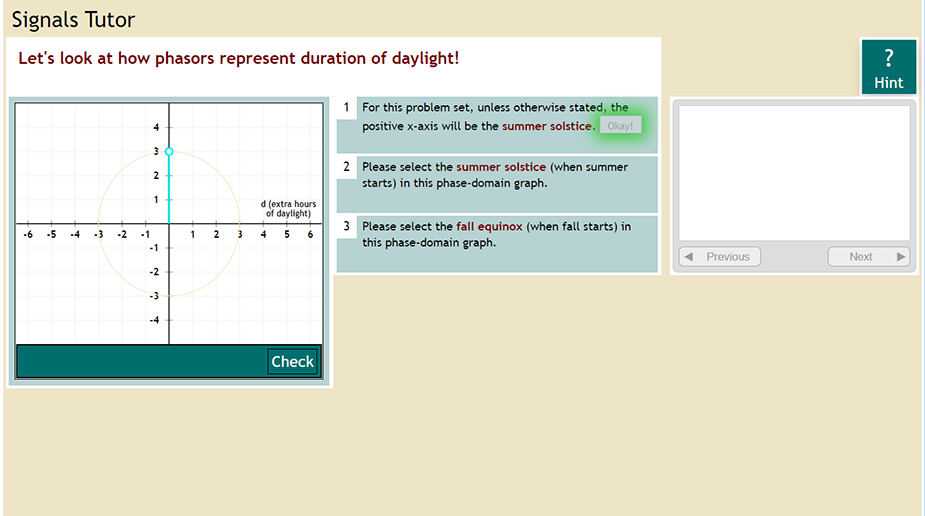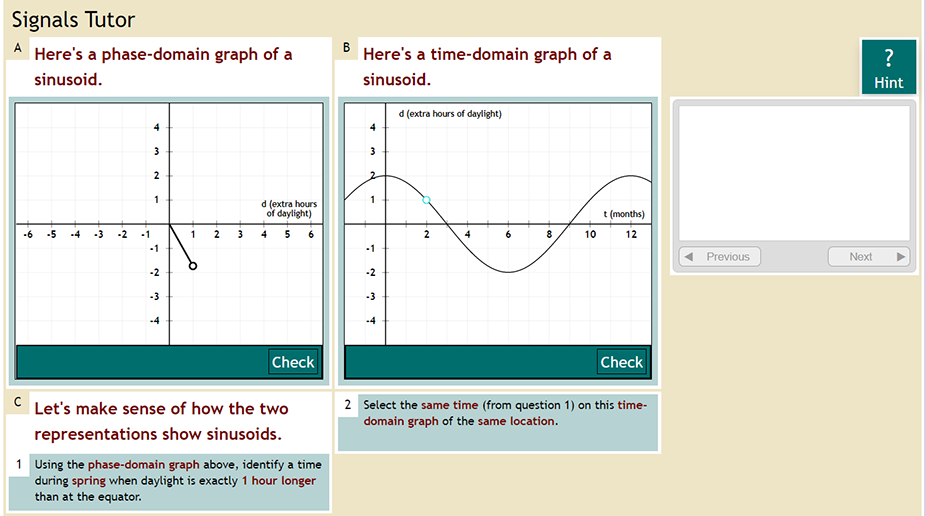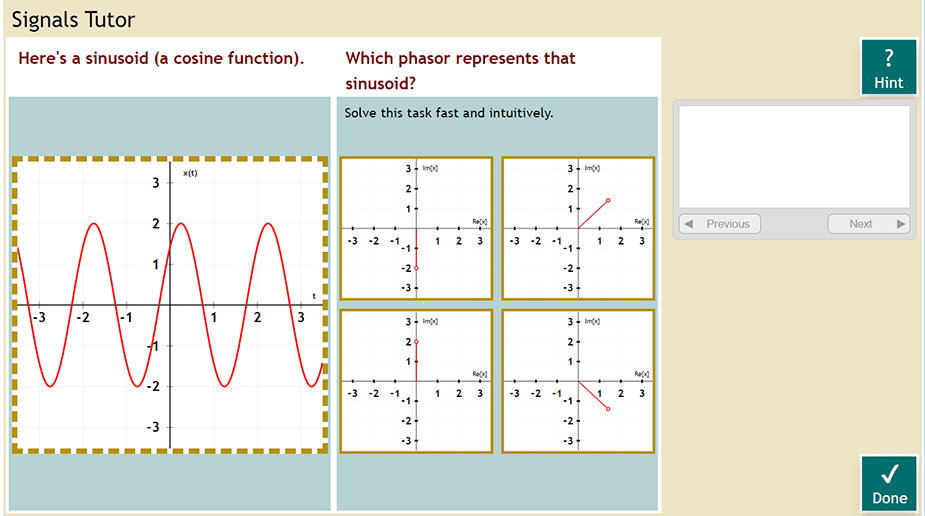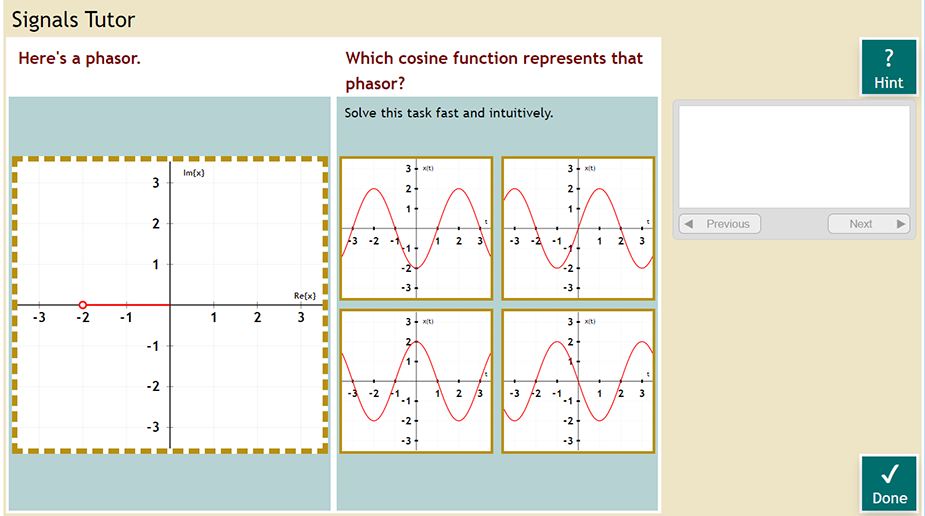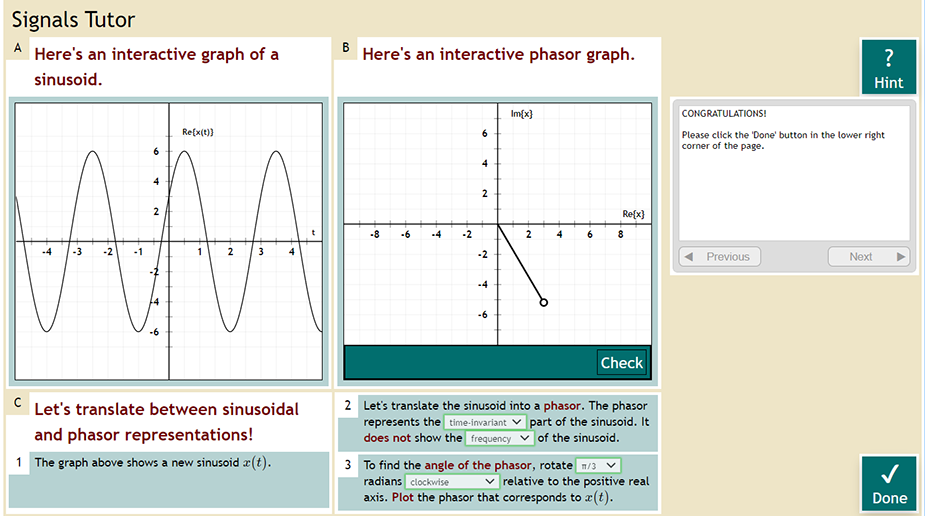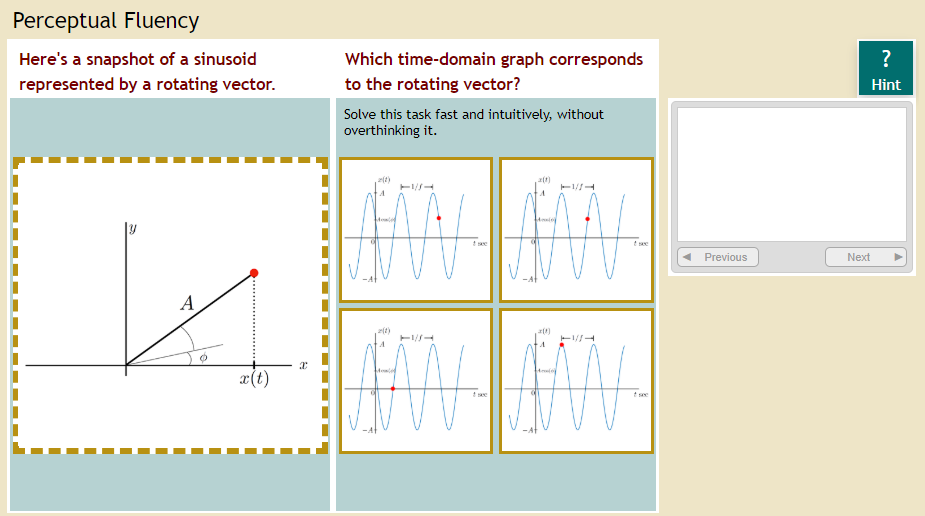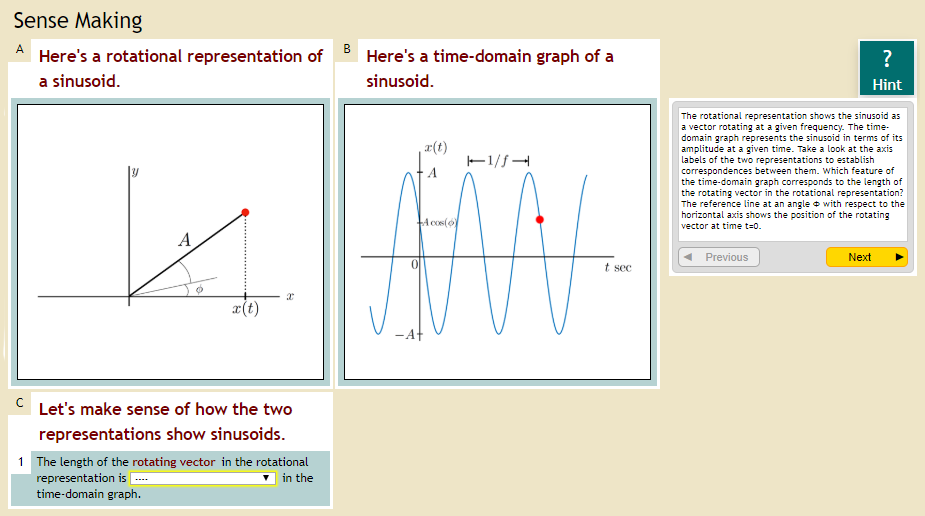Signals Tutor: Learn with visual representations!
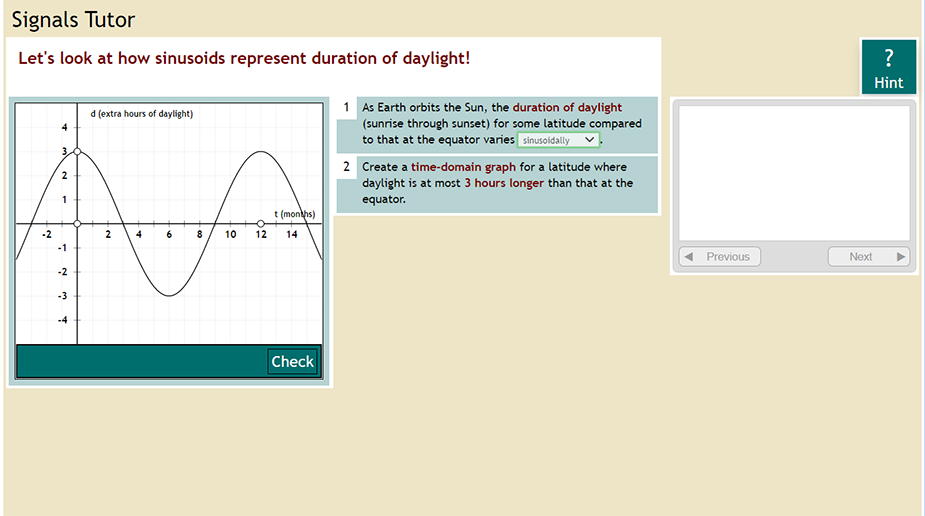
Signals Tutor is an intelligent tutoring system for undergraduate students learning about foundational engineering concepts related to signal processing. Signals Tutor supports student learning by doing and helps students as they solve challenging engineering problems. It provides step-by-step guidance in the form of feedback and hints.
Interactive visual representations
Signals Tutor uses a variety of visual representations, such as Cartesian and polar coordinate graphs that are used throughout engineering instruction. Activities with these visuals are designed to help students acquire a deep, conceptual understanding of foundational concepts, such as sinusoids, imaginary and complex numbers, and continuous-time signals with Fourier series. A special feature of Signals Tutor is the use of interactive visual representations: students can actively manipulate representations by drawing functions, plotting points, and manipulating graphs. These interactions are always done in the context of complex engineering problems, such as analyzing sound signals.
What does Signals Tutor cover?
Signals Tutor covers a wide range of topics which are closely aligned with the Engineering Accreditation Commission (ABET) standards for engineering programs. In particular, the activities focus on students' ability to identify, formulate, and solve complex engineering problems that have no obvious solution and have direct consequences for a range of contexts (ABET Student Outcomes #1), their ability to communicate effectively (ABET Student Outcomes #3), and their ability to analyze and interpret data to draw conclusions (ABET Student Outcomes #6). Further, the instructional content and problems are based on engineering education research, which indicates that visual representations can enhance students' learning.
Where can I find out more about the research?
For more information about research related to Signals Tutor, please visit the Learning, Representations, & Technology Lab's website.

